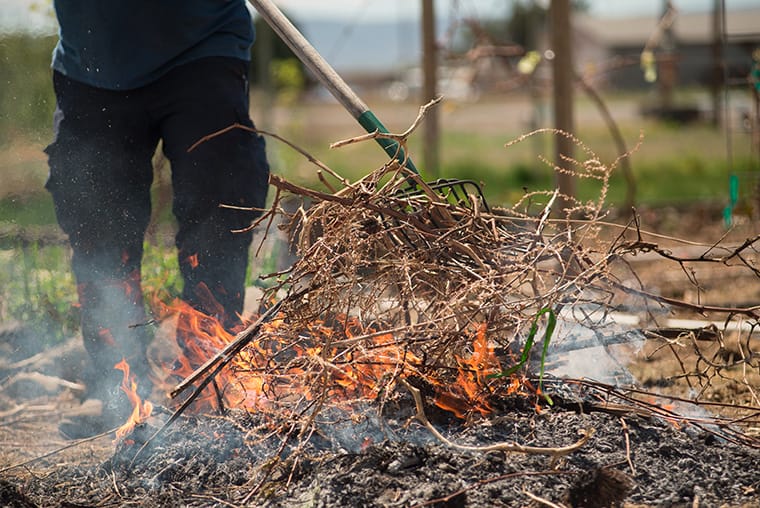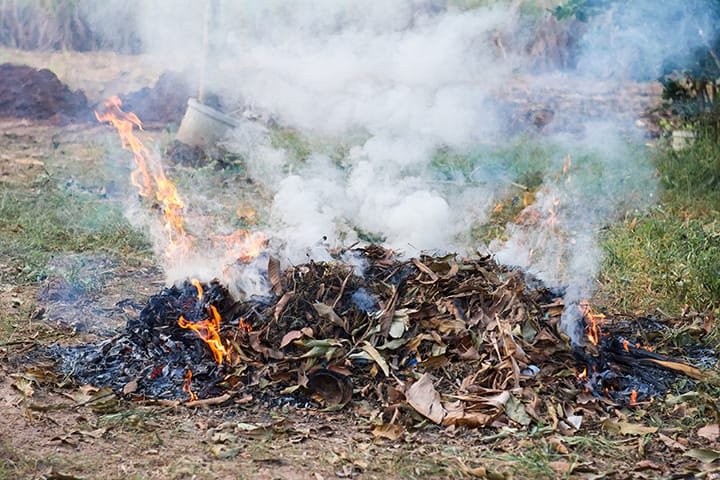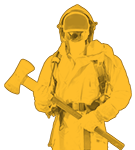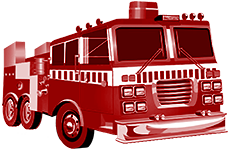A Guide to Open Air Burning in Fauquier County
NOTIFICATION IS REQUIRED – CALL 540.347.1313
Open Air Burning is PROHIBITED within the Town of Warrenton
General Information – Fauquier County
Open burning may only take place after those wishing to burn have notified the Fauquier County Sheriff’s Office Communications Center at (540) 347-1313.
PURPOSE
“…To protect the public health, safety and welfare by regulating open burning within the county of Fauquier…”
– Chapter 9 of the Fauquier County Code
THE “4:00 PM” BURN LAW
During the period between February 15th and ending April 30th of each year, open burning may only take place between the hours of 4:00 PM and 12:00 midnight.
PERMIT REQUIREMENT
A permit is required when open burning for the purpose of land or site clearing operations. This permit may obtained from the Department of Fire Rescue and Emergency Management at (540) 422-8800

PROHIBITED OPEN BURNING
The burning of garbage, refuse, trash, rubbish and other forms of liquid or solid waste is prohibited.
RESIDENTIAL BURNING
The burning of wood, brush, grass trimmings or leaves is permitted in all areas of the County, provided the following conditions are met:
- The fire must be a minimum of 50 feet from any structure and be 300 feet from any occupied.
- You MUST constantly attend the fire at all times.
- Burning MUST be conducted in such a fashion as to minimize any nuisance to neighbors.
OPEN BURNING FOR LAND AND SITE CLEARING
Open burning for land and site clearing operations resulting from commercial, industrial, or residential development is only permitted after obtaining a permit from the Fauquier County Department of Fire Rescue and Emergency Management. They may be reached at (540) 422-8800.
Open burning for these purposes is permitted in all other areas of the County, provided certain conditions are compiled with, as required by the Department of Fire Rescue and Emergency Management.
RECREATIONAL FIRES
Bonfires and campfires are permitted if the fuel consists only of seasoned dry hardwood, ignited with a small quantity of paper. Fires will be no more than 5 feet by 5 feet in dimension and will not burn more than 3 hours at any one time. At no time shall bonfires or campfires be used for waste disposal purposes.
BURNING LEAVES
Burn only dry leaves. Wet leaves produce unnecessary smoke generation.
Burn only small piles no more than 3 feet wide and 2 feet tall. Large, long piles do not completely burn.
Never use gas, lighter fluid or any other fuel to kindle or rekindle a fire. If the leaves need fuel to burn, they are too wet to burn and may create potential for injury.
Start the fire in your leaf pile against the wind. This will allow the fire to burn slower and burn deeper into the leaf pile.
Keep small children away from the fire and out of the smoke.
Keep a garden hose handy in case of sudden, uncontrolled fire spread.

Virginia Department of Forestry – Burn Law 10.1-1142
- It shall be unlawful to set fire to any woods, brush, logs, leaves, grass, debris or other inflammable material upon such land unless all reasonable care and precaution has been taken by having cut and piled or carefully cleared around the material to prevent the spread of such fire to lands other than those owned or leased by him. This also applies to any employee of any such owner or lessee of said land.
- Except as provided in subsection C, during the period February 15 through April 30 of each year, even though the precautions required by the foregoing subsection have been taken, it shall be unlawful in any county, city or portion thereof organized for forest fire control under the direction of the State Forester, to set fire to any brush, leaves, grass, debris or field containing dry grass or other inflammable material capable of spreading fire, located in or within 300 feet of any woodland, brush land or field containing dry grass or other inflammable material, except between the hours of 4:00 p.m. and 12:00 midnight.
- Subsection B shall not apply to any fire set between February 15 and March 1 of each year, if:
- The fire is set for “prescribed burning” that is conducted in accordance with a “prescription” and managed by a “certified prescribed burn manager” as those terms are defined in § 10.1-1150.1;
- The burn is conducted in accordance with § 10.1-1150.4;
- The State Forester has, prior to February 1, approved the prescription for the burn; and
- The burn is being conducted for one of the following purposes:
- control of exotic and invasive plant species that cannot be accomplished at other times of the year;
- wildlife habitat establishment and maintenance that cannot be accomplished at other times of the year; or
- management necessary for natural heritage resources. The State Forester may on the day of any burn planned to be conducted pursuant to this subsection revoke his approval of the prescription for the burn if hazardous fire conditions exist.
The State Forester may revoke the certification of any certified prescribed burn manager who violates any provision of this subsection.
- Any person who builds a fire in the open air or uses a fire built by another in the open air, within 150 feet of any woodland, brush land or field containing dry grass or other inflammable material, shall totally extinguish the fire before leaving the area and shall not leave the fire unattended.
- Any person violating any provisions of this section shall be guilty of a Class 3 misdemeanor for each separate offense. If any forest fire originates as a result of the violation by any person of any provision of this section, such person shall, in addition to the above penalty, be liable to the Commonwealth for the full amount of all expenses incurred by the Common-wealth in suppressing such fire. Such amounts shall be recoverable by action brought by the State Forester in the name of the Commonwealth on behalf of the Commonwealth and credited to the Forestry Operations Fund.
Town of Warrenton – Town/State Code Information
BURNING INFORMATION (FROM TOWN/STATE CODE):
Sec. 7-32. Burning on private property.
- It shall be unlawful for any person to burn any trash, lumber, leaves, straw, or any combustible material in or on any private property of the town without first obtaining a permit from the fire official.
- The fire official shall issue permits after consideration of safety factors and standards contained in the State Fire Prevention Code.
- The burning of materials in the use of cooking devices, barbecues, grills, etc. is specifically exempted from application of this section. (Ord. No. 1993-3, 3-9-93)
State law references: Air pollution control, Code of Virginia, § 10-17.9:1 et seq.; local ordinances, Code of Virginia, § 10-17.30; municipal regulation of fires on private property, Code of Virginia, § 15.1-872.
OPEN BURNING
The burning of materials wherein products of combustion are emitted directly into the ambient air without passing through a stack or chimney from an enclosed chamber. Open burning does not include road flares, smudge-pots and similar devices associated with safety or occupational uses typically considered open flames or recreational fires. For the purpose of this definition, a chamber shall be regarded as enclosed when, during the time combustion occurs, only apertures, ducts, stacks, flues or chimneys necessary to provide combustion air and permit the escape of exhaust gas are open.
RECREATIONAL FIRE
An outdoor fire burning materials other than rubbish where the fuel being burned is not contained in an incinerator, outdoor fireplace, barbeque grill or barbeque pit and has a total fuel area of 3 feet (914 mm) or less in diameter and 2 feet (610 mm) or less in height for pleasure, religious, ceremonial, cooking, warmth or similar purposes.
SECTION 307; OPEN BURNING AND RECREATIONAL FIRES:
307.1 General. A person shall not kindle or maintain or authorize to be kindled or maintained any open burning unless conducted and approved in accordance with this section.
307.1.1 Prohibited open burning. Open burning that is offensive or objectionable because of smoke or odor emissions or when atmospheric conditions or local circumstances make such fires hazardous shall be prohibited.
307.2 Permit required. A permit shall be obtained from the fire code official in accordance with Section 105.6 prior to kindling a fire for recognized silvicultural or range or wildlife management practices, prevention or control of disease or pests, or a bonfire. Application for such approval shall only be presented by and permits issued to the owner of the land upon which the fire is to be kindled.
307.2.1 Authorization. Where required by state or local law or regulations, open burning shall only be permitted with prior approval from the state or local air and water quality management authority, provided that all conditions specified in the authorization are followed.
307.3 Extinguishment authority. The fire code official is authorized to order the extinguishment by the permit holder, another person responsible or the fire department of open burning that creates or adds to a hazardous or objectionable situation.
307.4 Location. The location for open burning shall not be less than 50 feet (15 240 mm) from any structure, and provisions shall be made to prevent the fire from spreading to within 50 feet (15 240 mm) of any structure.
Exceptions:
- Fires in approved containers that are not less than 15 feet (4572 mm) from a structure.
- The minimum required distance from a structure shall be 25 feet (7620 mm) where the pile size is 3 feet (914 mm) or less in diameter and 2 feet (610 mm) or less in height.
307.4.1 Bonfires. A bonfire shall not be conducted within 50 feet (15 240 mm) of a structure or combustible material unless the fire is contained in a barbecue pit. Conditions which could cause a fire to spread within 50 feet (15 240 mm) of a structure shall be eliminated prior to ignition.
307.4.2 Recreational fires. Recreational fires shall not be conducted within 25 feet (7620 mm) of a structure or combustible material. Conditions which could cause a fire to spread within 25 feet (7620 mm) of a structure shall be eliminated prior to ignition.
307.5 Attendance. Open burning; bonfires or recreational fires shall be constantly attended until the fire is extinguished. A minimum of one portable fire extinguisher complying with Section 906 with a minimum 4-A rating or other approved on-site fire-extinguishing equipment, such as dirt, sand, water barrel, garden hose or water truck, shall be available for immediate utilization.
SECTION 308; OPEN FLAMES:
308.1 General. This section shall control open flames, fire and burning on all premises.
308.3 Open flame. A person shall not utilize or allow to be utilized, an open flame in connection with a public meeting or gathering for purposes of deliberation, worship, entertainment, amusement, instruction, education, recreation, awaiting transportation or similar purpose in Group A or E occupancies without first obtaining a permit in accordance with Section 105.6.
308.3.1 Open-flame cooking devices. Charcoal burners and other open-flame cooking devices shall not be operated on combustible balconies or within 10 feet (3048 mm) of combustible construction.
Exceptions:
- One- and two-family dwellings.
- Where buildings, balconies and decks are protected by an automatic sprinkler system.


